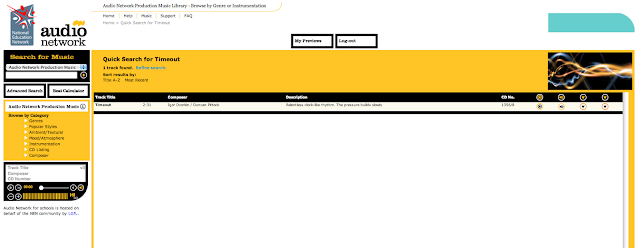In our preliminary task, the aim was to create a sequence which involved a 'match on action shot’, 'shot reverse shot' and also to make sure that we stuck to the 180 degree rule. We decided to create a fight sequence in which we used all of the shots correctly. We had a rough idea of what we wanted to film but didn’t know exactly what shots we wanted which led to us shooting things as they came to us but also shooting the scenes more than three times which proved to be very time consuming. From this I would say that I learnt how important planning and storyboarding is therefore when planning the title sequence our storyboards proved to be very crucial because although we didn't follow them entirely without a rough guide to follow our sequence would not have been as well developed and thought out as it is. We also made sure that we made timed schedules so that each group member new the days which we was going to be filming which proved successful as we was always organised.
The shots that we was asked to incorporate in this task proved to be very helpful as they not only helped us understand what they meant for example a high angle shot to show the weakness of a certain character but also helped when we was filming for the title sequence because we now knew what shots to include in certain places to make them as effective as possible. In the preliminary task we tried to make sure that all of the shots used gave out the correct messages to the audience however they may not have been 100% accurate due to the lack of experience which we had had as it was very early in the year. However as we now had a wider range of knowledge and experience we made sure that our title sequence was to include as many significant camera angles as possible and made sure that the messages that they expressed were as clear as possible.
In another task which we participated in we had a lesson on Foley sound to widen our knowledge on what to include in different sequences. We produced different sounds out of raw meat and vegetables which would sound like a slap/punch and the vegetables would act as leg or arm being snapped. When it came to using these sounds in our title sequence as a group we decided that it wasn’t necessary as their wasn’t a certain part in our sequence where they would be relevant nevertheless it was important that we learned about these sounds because if we was to use them in our title sequence it would have proved to be very important that we knew how to use the correctly.
When editing this small task it was hard for us all to get a chance to edit because again we was inexperienced and it was mainly trial and error when attempting different things. As a group one person did the editing and we all contributed ideas to which we felt would make the piece better. When editing for our title sequence the preliminary task came in very convenient because we used what we had already learnt and showed this when editing the title sequence. The editing was delegated between our group pretty well as we all made sure that we had all done some sort of editing. Some of my group members were better at certain parts of editing whereas another member would be better at something else this showed that we all worked together as a team to teach another member of the group something that they didn’t know which shows that we could all work together cleverly. In the end we all managed to learn how to edit using final cut to a very capable standard.
Overall the preliminary exercise proved to be a great start off point to then show how we could improve the mistakes that we had made to ensure that when included in our title sequence they will be to a near professional standard. This task also shows how important planning is and that if you don’t have a clear narrative idea of what to do it could prove to be a downfall of your title sequence. Making sure that all group members are involved and contributing was also very key to us producing a good quality title sequence.



















































